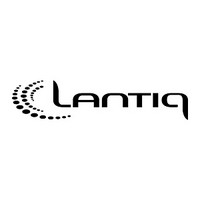PEB24911HV13 Lantiq, PEB24911HV13 Datasheet - Page 70

PEB24911HV13
Manufacturer Part Number
PEB24911HV13
Description
Manufacturer
Lantiq
Datasheet
1.PEB24911HV13.pdf
(155 pages)
Specifications of PEB24911HV13
Lead Free Status / Rohs Status
Supplier Unconfirmed
Available stocks
Company
Part Number
Manufacturer
Quantity
Price
Company:
Part Number:
PEB24911HV13
Manufacturer:
RENESAS
Quantity:
3 897
- Current page: 70 of 155
- Download datasheet (3Mb)
Pin-DT
U-Interface Events
ACT = 0/1
CRCOK
LOF
LSEC
LSU
Data Sheet
message DEAC will be issued. The high level needs to be applied continuously for
the transmission of single pulses.
Data Through
The function is identical with the C/I-code DT in all channels.
“ACT” bit received from the NT-side.
– ACT = 1 signals that the NT has detected INFO3 on the S/T-interface and indicates
– The U-transceiver performs transparency in both directions of transmission after
– The status “ready for sending” is reached when the state transparent is entered i.e.
– ACT = 0 indicates the loss of transparency on the NT-side (loss of framing or loss
Cyclic Redundancy Check OK
This input is used as a criterion that the receiver has acquired frame synchronization
and both its EC and EQ coefficients have converged.
Loss of Framing on the U-interface
This condition is fulfilled if framing is lost for 576 ms. 576 ms are the upper limit. If the
correlation between synchronization word and input signal is not optimal, LOF can be
issued earlier.
Loss of Signal Level behind the Echo Canceler
In the “Awake” state, this input is used as indication that the NT has ceased the
transmission of signal SN1. In the EC-training state, this input is used as an internal
signal indicating that the EC in the LT has converged.
Loss of Signal Level on the U-interface
This signal indicates that a loss of signal level for the duration of 3 ms has been
detected on the U-interface. This short response time is relevant in all cases where
that the complete basic access system is synchronized in both directions of
transmission. The LT-side is requested to provide transparency of transmission in
both directions and to respond with setting the ACT-bit to “1”. In the case of loop-
backs (loop-back 2 or single-channel loop-back in the NT), however, transparency
is required even when the NT is not sending ACT = 1. Transparency is achieved in
the following manner:
the receiver has achieved synchronization (state EQ-training is left) independent of
the status of the received ACT-bit.
when the C/I-channel indication AI is issued. This is valid in the case of a normal
activation procedure for call control. In the case of loop-backs (loop-back 2 or
single-channel loop-back in the NT and analog loop-back in the LT) however, the
status “ready for sending” is reached when the state line active is entered i.e. when
the C/I-channel indication UAI is issued. Until the status “ready for sending” is
reached, binary “0s” have to be passed in the B- and D-channels on DIN.
of signal level on the S/T-interface). The U-transceiver informs the LT-side by
issuing the C/I-channel indication EI2, but performs no state change or other
actions.
60
Functional Description
PEF 24911
2001-07-16
Related parts for PEB24911HV13
Image
Part Number
Description
Manufacturer
Datasheet
Request
R

Part Number:
Description:
Manufacturer:
Lantiq
Datasheet:

Part Number:
Description:
Manufacturer:
Lantiq
Datasheet:

Part Number:
Description:
Manufacturer:
Lantiq
Datasheet:











